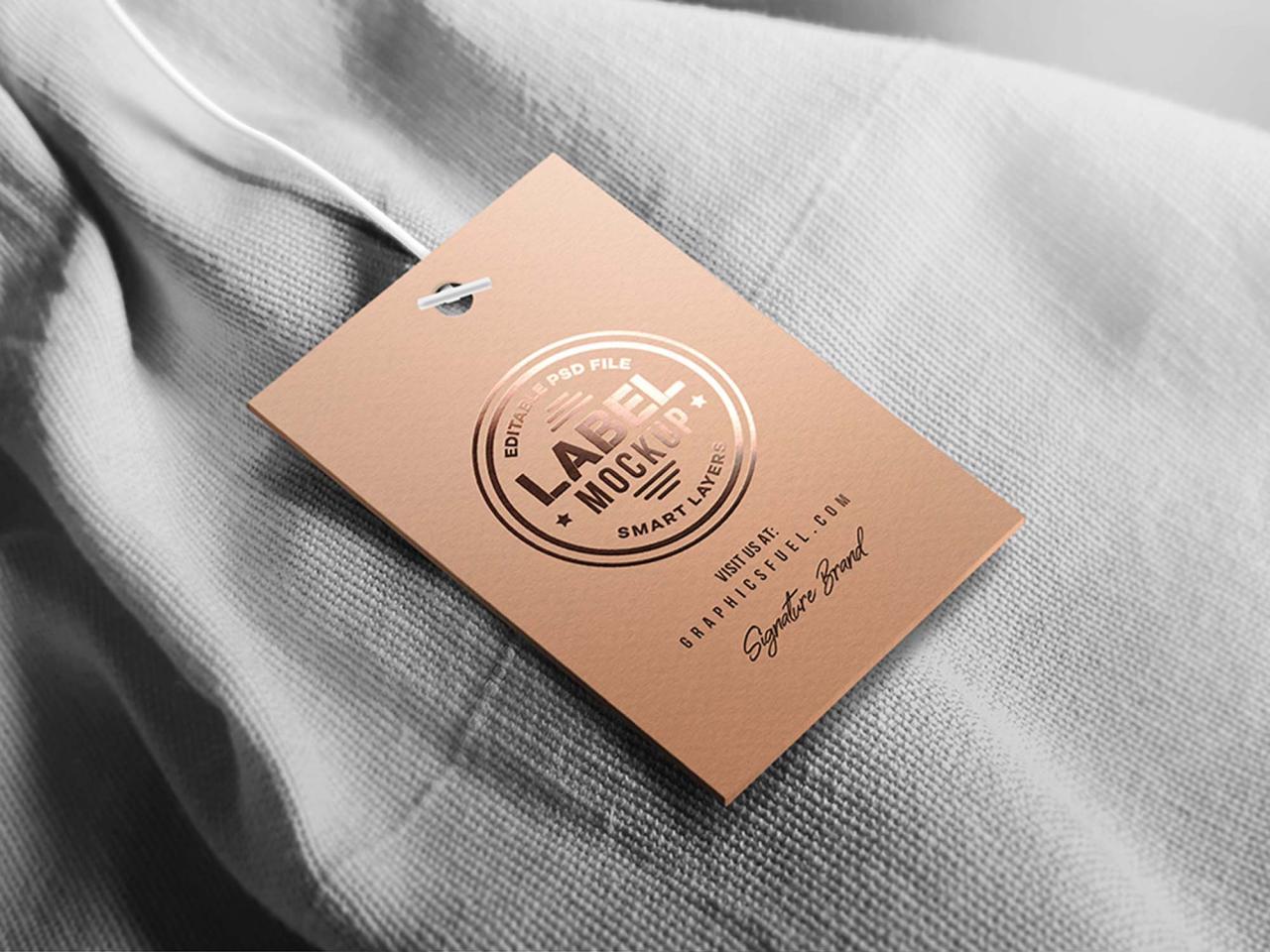
Clothing Label Mockup: Revolutionizing the Fashion Industry
Introduction
In the rapidly evolving fashion industry, the significance of presentation and branding cannot be overstated. A well-designed clothing label can elevate a garment’s aesthetics and create a lasting impression on consumers. Clothing label mockups have emerged as an indispensable tool for fashion designers and business owners, enabling them to envision the final product and make informed decisions before production. This article delves into the multifaceted world of clothing label mockups, exploring their benefits, applications, and creation process.
Benefits of Clothing Label Mockups
Clothing label mockups offer a plethora of advantages that streamline the design and production process.
1. Visualize the Final Product:
Mockups provide a realistic representation of the final label, allowing designers to visualize how it will appear on the garment. This eliminates guesswork and ensures that the label aligns with the overall design concept.
2. Experiment with Designs:
Digital mockups enable designers to experiment with various designs, colors, and fonts before committing to a final version. This flexibility empowers them to explore different options and refine the label’s aesthetics to perfection.
3. Save Time and Costs:
By utilizing mockups, designers can avoid costly mistakes and delays associated with physical sampling. Mockups allow them to identify potential issues early on, reducing the need for multiple rounds of production and minimizing expenses.
4. Enhance Branding:
A well-designed clothing label plays a pivotal role in brand recognition and differentiation. Mockups enable businesses to showcase their brand identity through the label’s design, ensuring that it effectively communicates the brand’s message and values.
Applications of Clothing Label Mockups
Clothing label mockups find applications in various aspects of the fashion industry:
1. Design and Prototyping:
Designers use mockups as a starting point for creating new clothing labels. They experiment with different designs and receive feedback from clients before finalizing the production-ready label.
2. Marketing and Presentation:
Mockups are an integral part of marketing campaigns. They can be used to create visually appealing images and videos that showcase the label’s design and highlight its unique features. Mockups enhance the presentation of garments in both online and offline marketing materials.
3. Client Approvals:
Mockups facilitate client approvals by providing a tangible representation of the proposed label design. Clients can visualize the label on the garment and provide feedback before the label goes into production.
How to Create a Clothing Label Mockup
Creating a clothing label mockup requires a basic understanding of graphic design principles and software. Here’s a step-by-step guide:
1. Choose the Right Software:
Several software options are available for creating clothing label mockups, including Adobe Photoshop, Illustrator, and GIMP.
2. Find a Template or Create One:
If using a software program, search for pre-made clothing label templates or create one using the program’s tools. The template should include the label’s dimensions and shape.
3. Design the Label:
Import the template into the software and start designing the label. Experiment with different colors, fonts, and graphics to create a unique and eye-catching design.
4. Save and Export:
Once the design is complete, save the file in a suitable format, such as PSD or JPEG. Export the image in high resolution for optimal printing results.
Best Practices for Clothing Label Mockups
To create effective clothing label mockups, consider these best practices:
1. Use High-Quality Images:
Utilize high-resolution images of the label and the garment to ensure clarity and accuracy in the mockup.
2. Pay Attention to Lighting:
Proper lighting is crucial for creating realistic mockups. Adjust the lighting to highlight the label’s design and create a professional look.
3. Consider the Garment’s Texture:
The mockup should reflect the texture of the garment where the label will be attached. This adds depth and realism to the final image.
4. Get Feedback:
Seek feedback from colleagues or clients to refine the mockup and ensure that it effectively communicates the intended message.
FAQ
1. What is the ideal resolution for clothing label mockups?
300 DPI (dots per inch) or higher is recommended to ensure high image quality, especially for printing purposes.
2. Can I use clothing label mockups for commercial purposes?
It depends on the specific mockup you use. Some mockups have licensing restrictions, so always check the terms of use before using them for commercial purposes.
3. Can I modify pre-made clothing label templates?
Yes, most pre-made templates can be modified to suit your specific design needs. You can change the colors, fonts, and graphics to create a unique label design.
4. Do I need professional design software to create clothing label mockups?
While professional design software offers more advanced features, you can create basic clothing label mockups using free online tools or mobile apps. However, for high-quality, professional-looking mockups, it’s recommended to use dedicated design software.
5. How can I make my clothing label mockups stand out?
Consider using unique and eye-catching designs, incorporating 3D elements, and utilizing realistic textures to make your mockups stand out and capture attention.
Conclusion
Clothing label mockups have become an indispensable tool in the fashion industry, empowering designers and businesses to visualize and refine their label designs before production. By understanding the benefits, applications, and creation process of clothing label mockups, you can create striking and effective labels that elevate your garments





